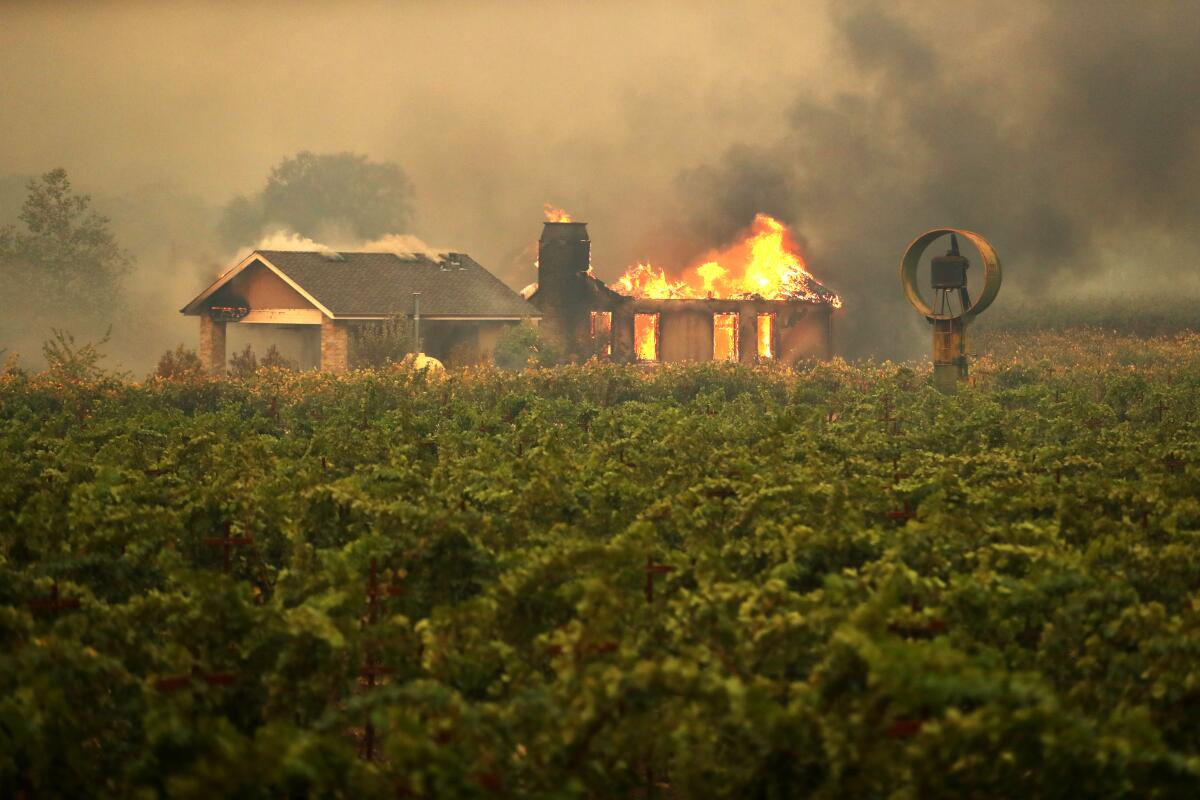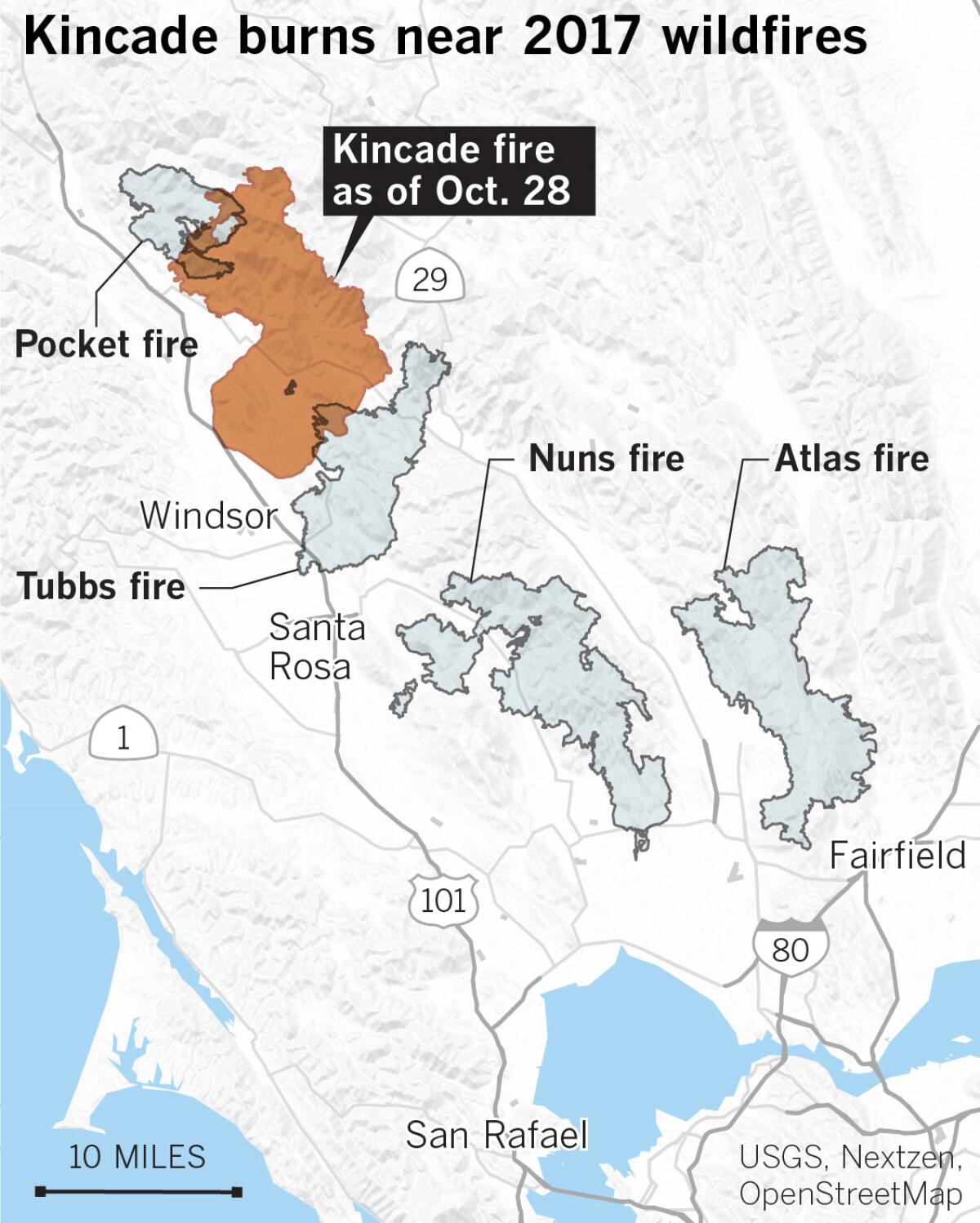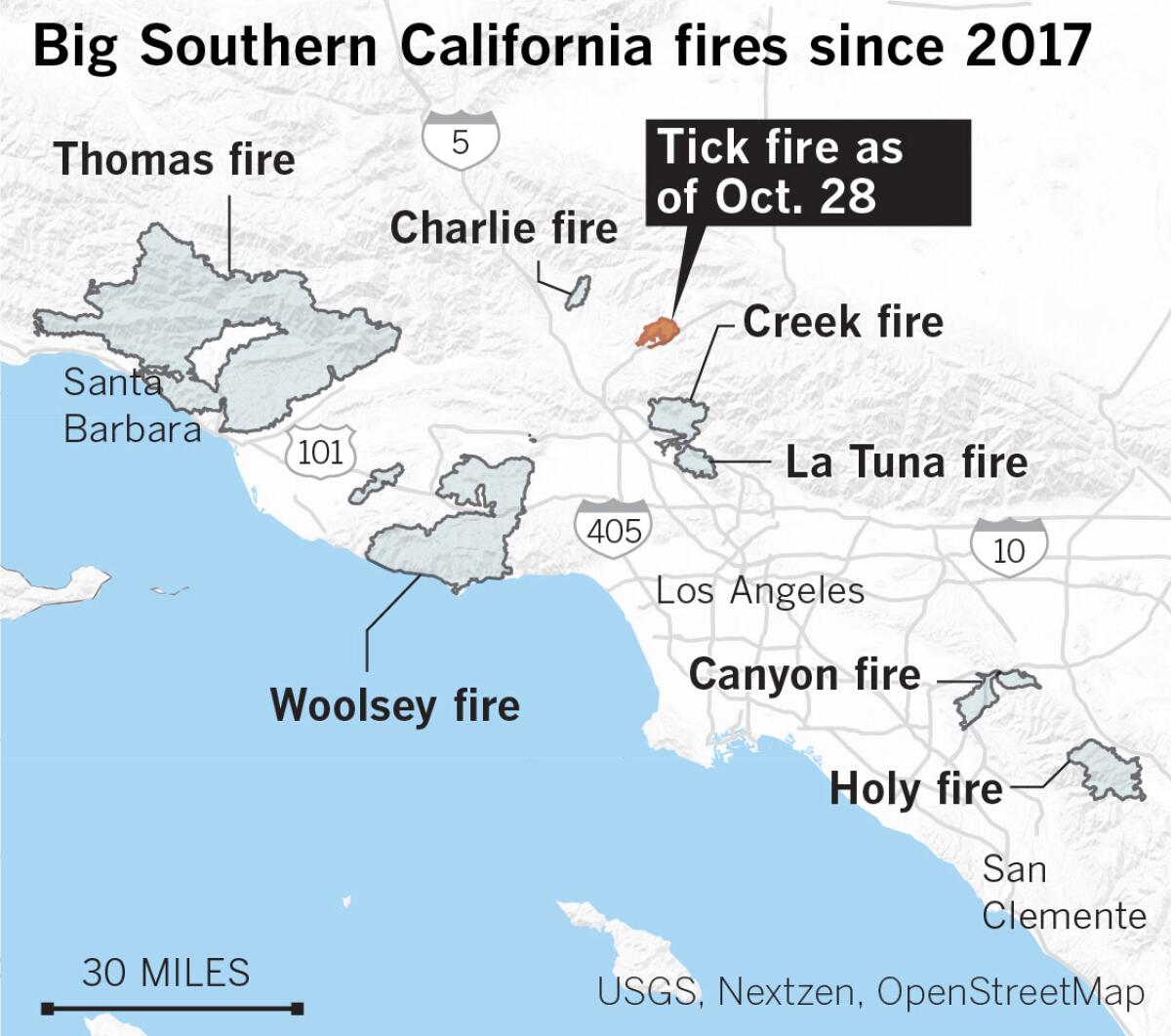The same areas of California keep catching on fire. What about limits on home building?

- Share via
The wildfires engulfing California this month have burned some of the same areas where other major fires have destroyed thousands of homes in recent years.
But while Gov. Gavin Newsom and state lawmakers have announced plans that could rein in Pacific Gas & Electric Co. and other utilities since this year’s blazes began, no one has formally proposed robust limits on home building in areas at risk of wildfire.
On Sunday, residents of Coffey Park, a neighborhood in Santa Rosa that was leveled in the Tubbs fire in 2017, received evacuation orders over the Kincade fire, which is currently ripping through Sonoma County. The community has yet to see damage from the new blaze, but some areas burned by the Kincade fire overlap with those affected two years ago — and fire officials fear the flames could grow when Diablo winds return to Northern California later this week.
Many homes have only just been rebuilt in Coffey Park. But the burnt trees that surround them serve as constant reminders of the Tubbs fire.
In June, the UC Berkeley Institute of Governmental Studies released a poll that showed that three-quarters of California voters believe the state should restrain home building in areas at high risk of wildfires. The poll, prepared for The Times, revealed bipartisan support for such restrictions after deadly fires wiped out tens of thousands of homes across the state in the last two years.
“The voters think there should be limits,” said Mark DiCamillo, director of the Berkeley IGS Poll.
The survey revealed broad backing across party lines, demographic groups and all regions in California for restricting growth in wildfire zones. Nearly 85% of Democrats support doing so compared with 57% of Republicans and 72% of independent voters.

At least 66% of respondents in every region backed the idea, including the non-Bay Area northern section of the state. That includes the area surrounding Paradise, which was almost entirely destroyed in last fall’s Camp fire and where many homeowners have said they hope to rebuild and in many cases are doing so.
Overall, 37% of voters surveyed said they supported strongly limiting new home building in wildfire areas, with an additional 38% saying they somewhat supported the idea.
Despite voters’ willingness to restrict growth in wildfire areas, Newsom and lawmakers have not discussed the idea comprehensively, alongside other options to prevent destructive infernos. State leaders have instead focused their discussions on utility companies’ financial responsibility for the blazes, how to pay for damages from wildfires and cutting back vegetation and other ways to manage the state’s forests. One bill that would have added extra restrictions on cities and counties’ ability to approve housing in high-risk zones was held in a legislative committee earlier this year.
Last year Ken Pimlott, the recently retired head of the California Department of Forestry and Fire Protection, said that government should consider stopping home building in threatened communities because of the substantial loss of property and lives.
But in an interview with the Associated Press this spring, Newsom rejected it.
“There’s something that is truly Californian about the wilderness and the wild and pioneering spirit,” Newsom said. “I’m not advocating for” no building.
Stanford University’s Michael Wara, who recently served on a state wildfire commission, said the scale of recent fires is influencing how Californians think about development, even those whose property is safe.
“They wake up and go outside and they can’t breathe and there’s ash on their car,” said Wara, who directs the school’s climate and energy policy program. “It’s not something you read about in the newspaper. It’s something you experience.”

But Wara said any decision to limit growth in fire zones remains politically difficult. People who own land or might want to build in those areas strongly prefer to maintain the status quo.
“This is an issue where there’s concentrated very powerful interests that have a lot to lose by changing the rules,” he said.
It’s also possible that voters might support the idea for limiting growth but not the details of what a plan might look like, said DiCamillo, the pollster. A recent Cal Fire report said 1 in 4 Californians live in areas considered at high risk for wildfires, including in suburban Southern California and the Bay Area.
People who live in parts of Marin County may not realize they reside in one of these zones when answering that question, he said. “They’re probably thinking about all these rural areas.”
The online survey of 4,435 California voters took place June 4 to 10 and had an overall margin of sampling error of plus or minus 2.5%.
More to Read
Sign up for Essential California
The most important California stories and recommendations in your inbox every morning.
You may occasionally receive promotional content from the Los Angeles Times.











